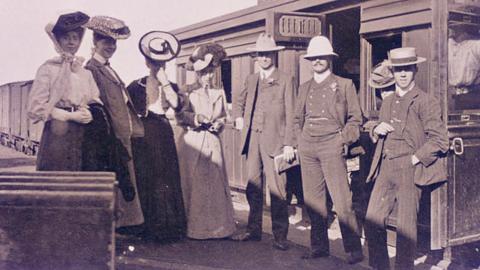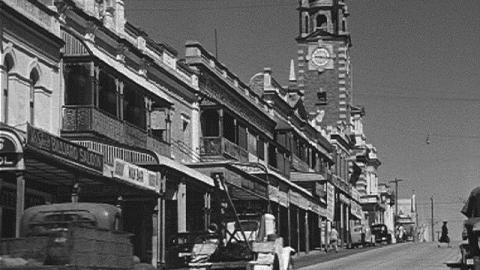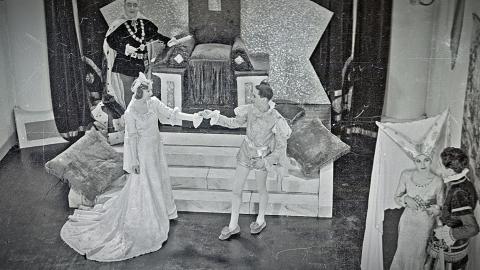
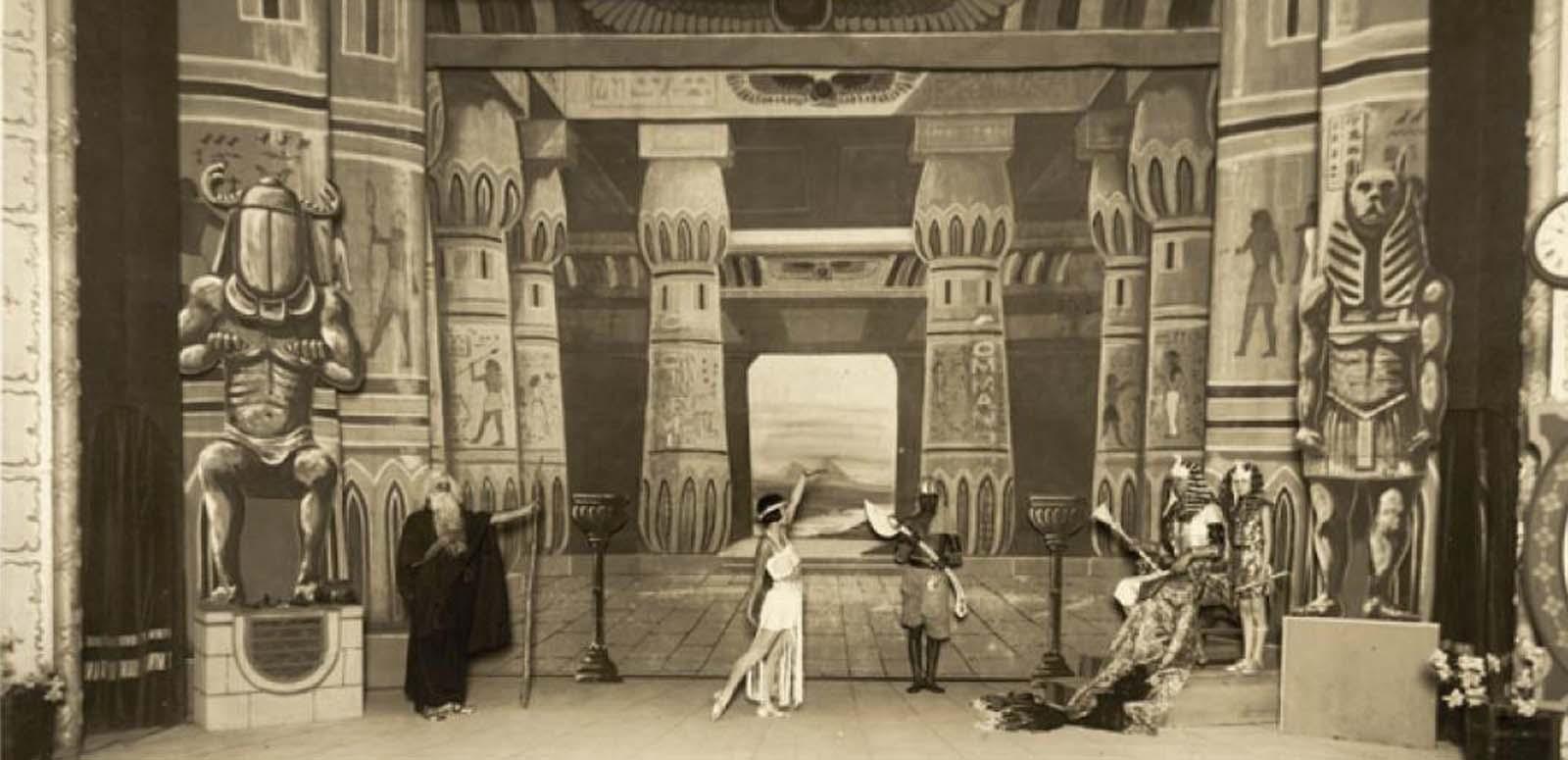
Franklyn Barrett with The Ten Commandments in Queensland, 1925
Jeannette Delamoir is researching Franklyn Barrett’s 1925 tour of Queensland in which he screened Cecil B De Mille’s The Ten Commandments (1923) with spectacular live accompaniment.
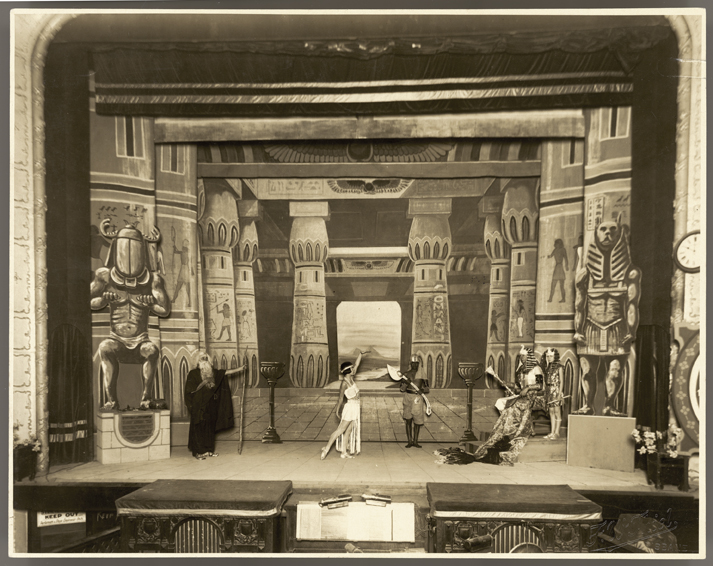
The set for the prologue, with five actors on stage (Item 764861)
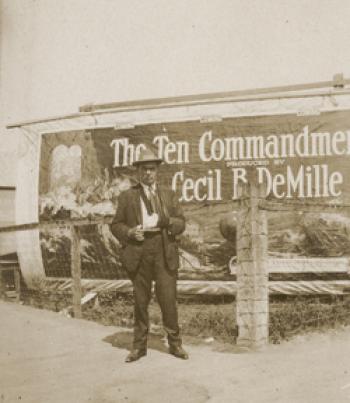
No one came to the railway station to meet Paramount ‘exploiteer’ Franklyn Barrett. The hotel didn’t know anything about a room reservation. Mr Carler, the movie theatre proprietor, resisted properly publicising the ‘colossal’ film. Barrett’s hand had been injured in a stage stunt that went wrong, and after his long, dusty rail trip, the hotel could only supply him with a tin jug holding one pint of water instead of the long, refreshing shower he had been eagerly anticipating.
But with tremendous tenacity and ingenuity, Barrett organized the publicity, and rehearsed the actors and musicians. From its opening night, The Ten Commandments — along with its live, on-stage prologue — played to packed houses. Mr Carler was astounded.
This small, unidentified town in Far North Queensland was just one of the many places Franklyn Barrett visited on the 1925 tour that criss-crossed the state. He travelled on behalf of Paramount, showing Cecil B DeMille’s 1923 silent film and lugging 11 tons of scenery and costumes. In each town, he presented the film and a live ‘atmospheric Egyptian prelude’ that involved slave-girls dancing and the Pharaoh mourning the death of his child. Accompanying the prologue were live music, atmospheric coloured lighting, the exotic smell of incense and explosive special effects.

Barrett’s tour is the subject of my Scholars and Artists in Residence research project. The NFSA’s Franklyn Barrett collection is rich in materials that give an unprecedented insight into the life of an exploiteer, as these travelling showmen were called. An unexpected highlight of the collection is a four-page type-written manuscript written by Barrett, about his many mishaps with Mr Carler in this unnamed town.
This document, and many others relating to the Queensland tour of The Ten Commandments, reflect Franklyn Barrett’s characteristic adaptability. At the same time, they reveal rare details about film distribution and exhibition in regional areas. One of my particular interests is looking at how small, isolated communities with primitive cinema facilities interacted with this film, as well as the latest publicity techniques straight from the USA.
But above all, the collection clearly shows that Barrett, although one of the most important pioneering Australian filmmakers, was also thoroughly embedded in the global film industry from its beginnings.
YouTube clip: The Ten Commandments Part 1
YouTube clip: The Ten Commandments Part 2
The National Film and Sound Archive of Australia acknowledges Australia’s Aboriginal and Torres Strait Islander peoples as the Traditional Custodians of the land on which we work and live and gives respect to their Elders both past and present.
